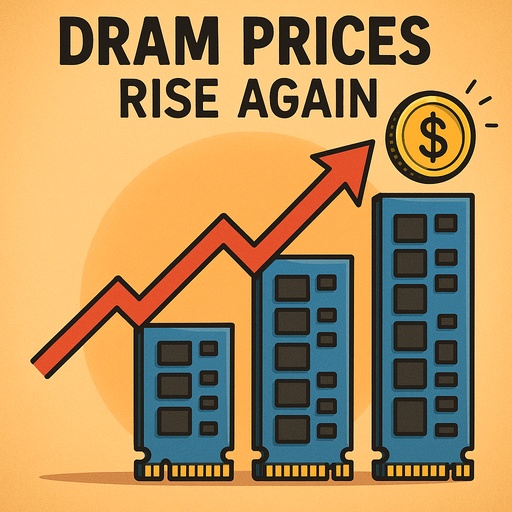Average market prices for DRAM memory chips surged sharply in May 2025, particularly for DDR4 8 Gbit chips which increased 27% to $2.10. The rise is attributed to electronics manufacturers building inventory amid US trade tariffs and reduced production from leading companies.

G. Ostrov
The DRAM memory market is experiencing another price surge as average market prices for DRAM and NAND memory chips rose again in May 2025, with DDR4 chips seeing the most significant increases.
Scale of Price Increases
The most dramatic increase occurred in 8 Gbit DDR4 chips, which rose 27% in May from $1.65 to $2.10. Considering these chips cost $1.37 in March, this represents the second consecutive price jump of over 20% in a short period.
Causes of the Surge: Trade Tariffs and Stockpiling
Analysts attribute the price increases to inventory building by device manufacturers attempting to maximize the 90-day grace period for import tariffs. The US government suspended tariff increases for 90 days but has not completely abandoned its plans.
Micron's Market Impact
In spring 2025, US company Micron — the third-largest DRAM manufacturer — announced plans to raise prices, citing US tariff increases. This became a catalyst for companies to urgently begin building warehouse inventories.
DDR4 Special Situation
Legacy and relatively inexpensive DDR4 chips, intended for affordable products where every cent matters in pricing, became particularly sought after. An additional reason for increased DDR4 demand came from reports that leading manufacturers Samsung, Micron, and SK hynix are abandoning DDR4 production.
Chinese Competition and Its Consequences
The abandonment of DDR4 production by major companies is related to increased competition from China. Companies like CXMT and Fujian Jinhua are reducing prices to such an extent that their brand-new DDR4 products cost less than refurbished memory from the "big three." Notably, CXMT also decided to cease DDR4 production.
Historical Context
For comparison: in fall 2024, there was an expected decline in memory chip prices — 17% in September and 20% in November. Prices then stabilized until April 2025, when the new surge began.
Market Consolidation Effects
The simultaneous exit of major manufacturers from DDR4 production while Chinese competitors also reduce capacity creates a supply shortage in a previously commoditized market segment. This shift forces companies dependent on DDR4 for cost-sensitive applications to compete for limited supply.
Industry Implications
Such massive supply reduction, compounded by increased demand, means companies will have to pay more for DRAM and NAND chips. Analysts are confident that if the global tariff situation and memory production do not stabilize, chip costs will continue rising in the coming months, ultimately affecting consumers.
For more information about the memory market situation, visit the official Micron Technology website.




